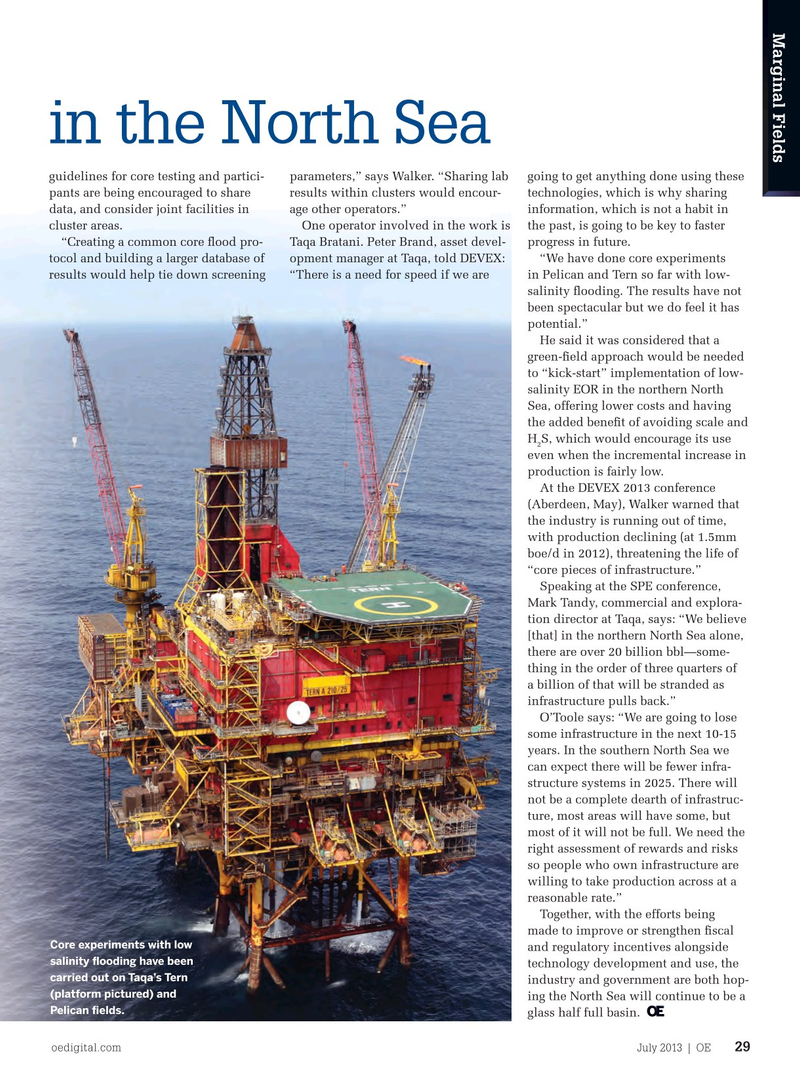
Page 27: of Offshore Engineer Magazine (Jul/Aug 2013)
Read this page in Pdf, Flash or Html5 edition of Jul/Aug 2013 Offshore Engineer Magazine
Marginal Fields in the North Sea guidelines for core testing and partici- parameters,” says Walker. “Sharing lab going to get anything done using these pants are being encouraged to share results within clusters would encour- technologies, which is why sharing data, and consider joint facilities in age other operators.” information, which is not a habit in cluster areas. One operator involved in the work is the past, is going to be key to faster “Creating a common core food pro- Taqa Bratani. Peter Brand, asset devel- progress in future.
tocol and building a larger database of opment manager at Taqa, told DEVEX: “We have done core experiments results would help tie down screening “There is a need for speed if we are in Pelican and Tern so far with low- salinity fooding. The results have not been spectacular but we do feel it has potential.”
He said it was considered that a green-feld approach would be needed to “kick-start” implementation of low- salinity EOR in the northern North
Sea, offering lower costs and having the added beneft of avoiding scale and
H S, which would encourage its use 2 even when the incremental increase in production is fairly low.
At the DEVEX 2013 conference (Aberdeen, May), Walker warned that the industry is running out of time, with production declining (at 1.5mm boe/d in 2012), threatening the life of “core pieces of infrastructure.”
Speaking at the SPE conference,
Mark Tandy, commercial and explora- tion director at Taqa, says: “We believe [that] in the northern North Sea alone, there are over 20 billion bbl—some- thing in the order of three quarters of a billion of that will be stranded as infrastructure pulls back.”
O’Toole says: “We are going to lose some infrastructure in the next 10-15 years. In the southern North Sea we can expect there will be fewer infra- structure systems in 2025. There will not be a complete dearth of infrastruc- ture, most areas will have some, but most of it will not be full. We need the right assessment of rewards and risks so people who own infrastructure are willing to take production across at a reasonable rate.”
Together, with the efforts being made to improve or strengthen fscal
Core experiments with low and regulatory incentives alongside salinity fooding have been technology development and use, the carried out on Taqa’s Tern industry and government are both hop- (platform pictured) and ing the North Sea will continue to be a
Pelican felds.
glass half full basin. oedigital.com July 2013 | OE 29
MF1_Devex.indd 29 6/26/13 12:18 PM

 26
26

 28
28